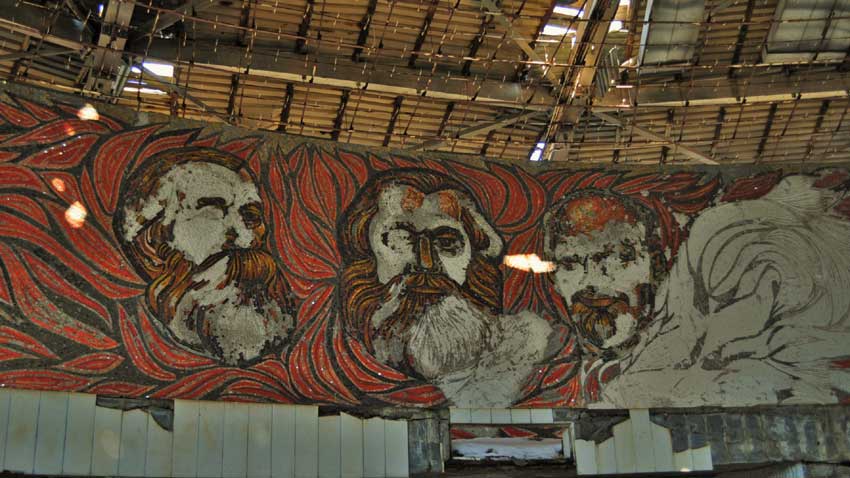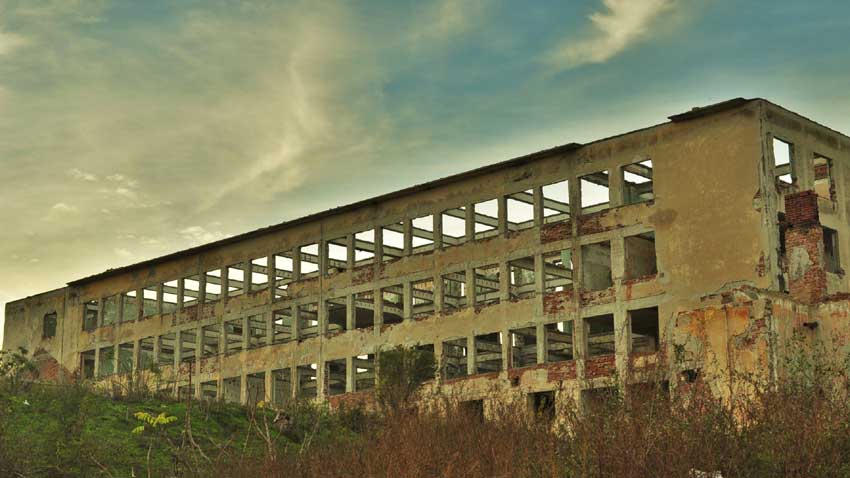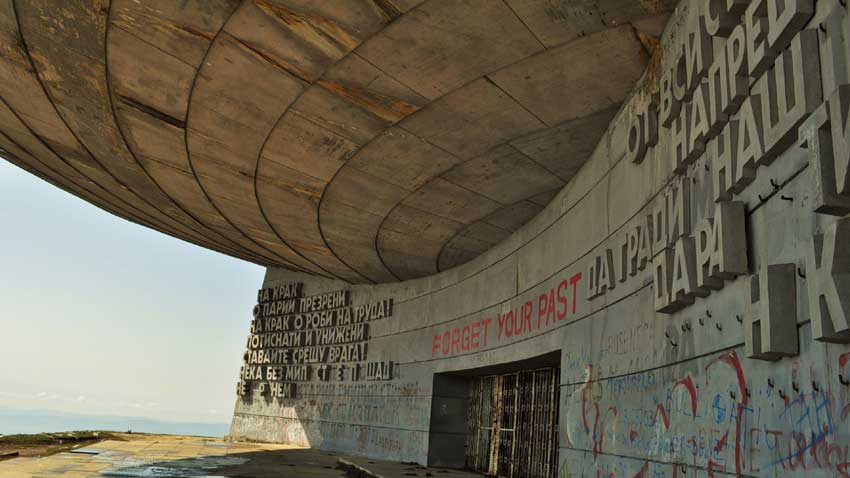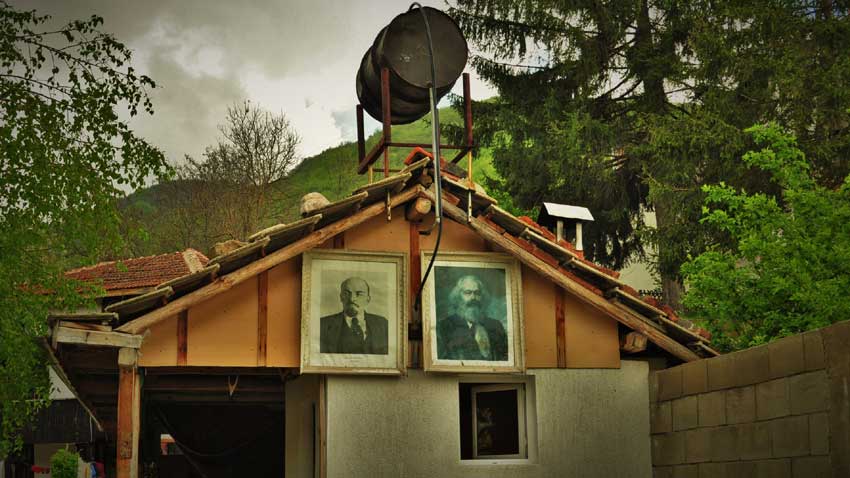There is one kind of tourism that Bulgaria has been stubbornly trying to ignore. It is known as dark tourism and is in fact a licrative industry across the world. Tens of thousands of fans of dark tourism take to the road in search of the not too distant past, in a drive to immerse themselves in the macabre atmosphere of deserted cities, derelict prisons, concentration camps and other sites no ordinary tourist would visit. Top destinations for such grim journeys are the former socialist countries. In many of them there are specially organized tours for visitors who want to get a taste of the reality of communism. But not in Bulgaria. You don't have to go to Chernobyl to experience a truely bleak atmosphere. All you have to do is go to northwestern Bulgaria to feel the sorrow and melancholy of the deserted towns and villages, the faded symbols of communism and derelict and abandoned factories. What could be more attractive to the true fans of dark tourism!

The point is that when it comes to its socialist heritage, Bulgaria has been acting like a blushing girl. "Bulgarians are ashamed of their communist past and do their best to forget it or to hide it," says 32-year-old Tsvetelina Tsankova - owner of the only tour operator in the country that organizes the so-called "Communist nostaliga tour.”

"Most likely, we have not really put our past into perspective and do not see it as history; we still see it as our present. When foreigners visit the National Museum of History in Sofia, they ask why Bulgaria’s history is shown until 1944 and then starts again with the pen Georgi Parvanov used to sign the EU Membership agreement. The museum’s collection does not cover 45 years of history – the period of totalitarianism. People ask where our socialist past is. Our explanations that it is still too early and at least 80 to 100 years should pass before we are able to assess the period, make no sense to them.”

Still, dark tourists - mostly Swedes, Belgians, Frenchmen and Americans can never get bored in Bulgaria - there is so much to be seen and photographed. Tsvetelina says that foreigners are thrilled by the deserted industrial zone of the town of Pernik - once a prosperous center of the Bulgarian steel industry. Not to mention northwestern Bulgaria, which is officially the poorest region in the EU.
What used to be a developed industrial region of socialist Bulgaria was devastated during the period of transition. Whether these dark tourist sites symbolize the 45 years of totalitarian rule or are a sign of the last 25 years of painful transition to democracy - that is something for you to decide. The socialist tour includes the monument to the Soviet Army monument in the heart of Sofia, the dams built in the mid-20th century, which swallowed whole villages with their churches and others. Tourists enjoy visiting a typical apartment in a concrete pre-fab building or go to see what an empty shop looked like in "socialist" times. But when tourists ask to visit a museum of socialism they are disappointed - there is no such museum in Bulgaria. "People ask us how come all other former socialist countries have their museums of totalitarianism, but there is no such museum Bulgaria" – Tsvetelina says and adds:

"Tourists often ask me if we could visit the former concentration camp on the Danube island of Belene. I have personally spoken with municipality officials there. There are ideas for turning the site into a tourist landmark, or at least of creating an exhibition of photos and archives as there are no preserved camp premises. Foreigners are accustomed to knowing that such information should not be concealed. In other post-communist countries there is a widespread view that history should be remembered so as not to be repeated. These countries invest efforts to preserve places that are reminiscent of the recent past. "

People who lived on the other side of the Iron Curtain continue to view us as "a former socialist country." They want to understand how Bulgarians survived for 45 years in a one-party society characterized by political repression, censorship, and planned economy with a ban on private ownership, State Security, and so on. It turns out that it is not only communism that provokes tourists’ curiosity, but so do the years of transition. Abandoned villages with one or two residents against the backdrop of beautiful scenery, deserted towns with jagged pre-fab apartment blocks, former factories turned to ruin ... These sites could attract fans of dark tourism and bring money into the country. This could only happen if Bulgarians finally manage to distance themselves from the years of socialism and show a pinch of imagination and a sense of humor ... Bulgaria has a strong presence in the most popular specialized websites for dark journeys and it is just a matter of time to reconsider our recent past. Hopefully that does not take 80-100 years.
English: Alexander Markov
Photos: Veneta NikolovaThe old button lift in the village of Govedartsi , Samokov Municipality, which takes tourists to the peak of Malyovitsa in the Rila Mountains, is to be modernised as a four-seater chairlift with a capacity of 1,520 people per hour . A proposal has been..
Bulgaria is presenting its own stand at the autumn international tourism fair in Bucharest, which is taking place from 21 to 24 November . Visitors to the Bulgarian stand are taking souvenir photos against the backdrop of photo panels with beautiful..
A country at the centre of ancient civilisations, whose historic sites sit amongst world-ranked Black Sea coastlines and snow-capped World Cup ski resorts, Bulgaria packs a lot of tourism attractions into its compact 111,000 square kilometres. And it's..

+359 2 9336 661
